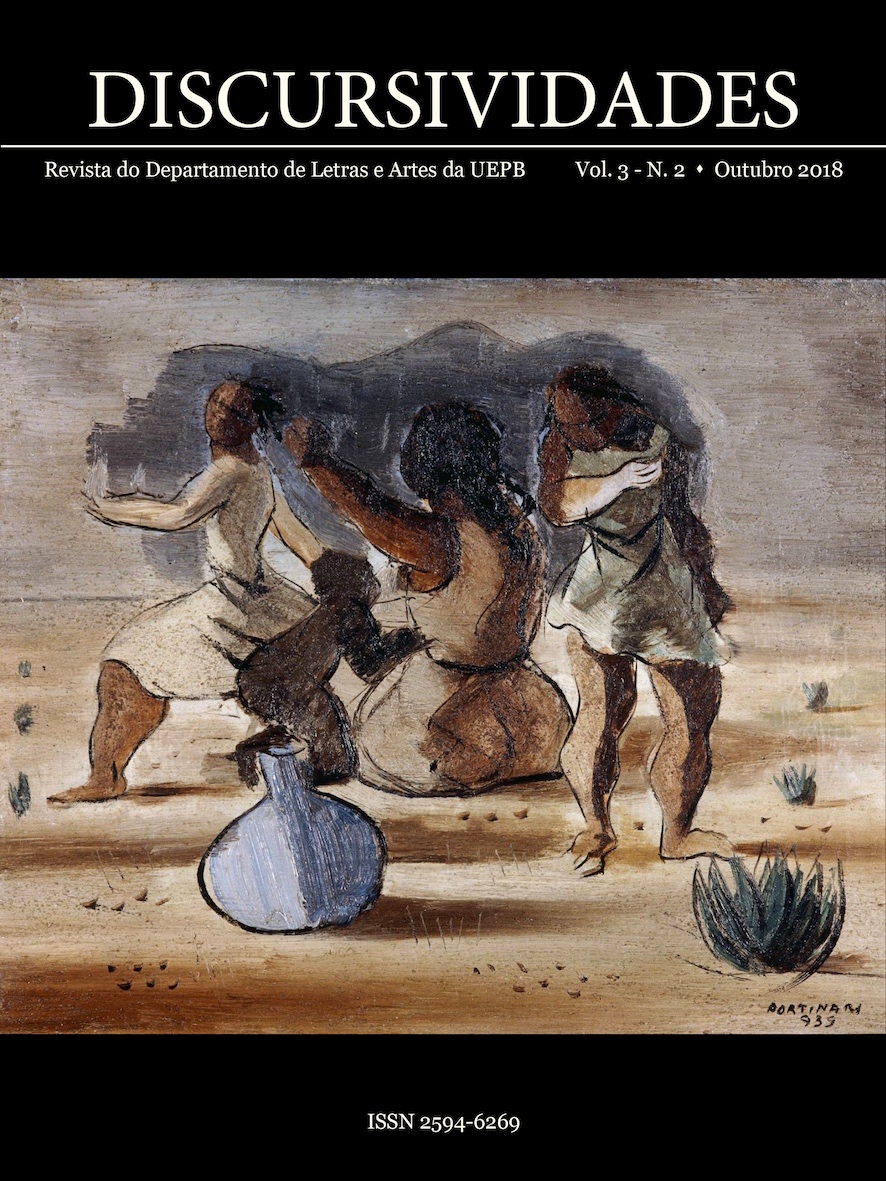Lexicografia multimodal: como as crianças percebem os recursos visuais dos dicionários infantis
Keywords:
Metalexicografia Pedagógica, Lexicografia Multimodal, MultimodalidadeAbstract
This study aims to investigate how visuals resources contribute to the understanding of a lexicographical text, and to speed up the brow- sing for information in the dictionary, trying to understand how students perceive the visual representation in the dictionary. It is theoretically grounded in studies and research on lexicography and pedagogical me- talexicography (BIDERMAN, 2001; KRIEGER, 2012; WELKER, 2008; PONTES, 2009, 2010, 2011 etc.) and the theoretical assumptions of social semiotics of Kress and van Leeuwen (2006). It is a qualitative study in which six students of a public school in Ceará between 10 and 13 years old wereinterviewed. Data analysis showed that the students perceived the visual representation of the dictionary, identifying the function of some of the visual resources of the pages and of the articles, especially the most salient elements such as illustrations and colors. However, they presented some difficulties in relating the illustrations to the corresponding entries.
References
BIDERMAM. M. T.C. As ciências do léxico. In: OLIVEIRA, A. M. P.P & ISQUERDO, A. N. (orgs.). As ciências do léxico: lexicologia, lexicografia e terminologia. 2a ed. Campo Grande, MS, Ed da UFMS, 2001. p. 13-22.
______. Dicionário Ilustrado de Português. 2a ed. São Paulo: Ática, 2009.
BRASIL. Edital do Programa nacional do livro didático – PNLD – Dicionários 2012. Brasília: SED/MEC, 2011.
DAMIM, C; PERUZZO, M. S. Uma descrição dos dicionários escolares no Brasil. Cadernos de Tradução. Florianópolis, v. 2, n. 18, p. 93-113, 2006. Disponível em: <http://journal.ufsc.br/index.php/traducao/article/ view/6981/6450>. Acesso em: 11 dez. 2011.
DIONISIO, A. P. Gêneros multimodais e multiletramento. In: KARWOSKI, A. M.; GAYDECKA, B.; BRITO, K.S. (Orgs.). Gêneros textuais: reflexiçoes e ensino. Rio de Janeiro: Lucerna, 2005. p. 159-177.
KRESS, G.; VAN LEEUWEN, T. Reading Images: the grammar of visual design. London, New York: Routledge, 2006.
KRIEGER, M.G. Dicionário em sala de aula: guia de estudos e exercícios. Rio de Janeiro: Lexikon, 2012.
MARTINS, M. T. Análise discursiva de dicionários infantis de língua portuguesa. São José do Rio Preto, SP. 2007, 150 p. Dissertação de Mestrado. Instituto de Biociências, Letras e Ciências Exatas da Universidade Estadual Paulista, Campus de São José do Rio Preto, 2007.
PONTES, A, L. Dicionário para Uso Escolar: o que é, como se lê. Fortale- za: EdUECE, 2009.
________ S, A. L. Multimodalidade em dicionários escolares. In: IS- QUERDO, Aparecida Negri; BARROS, Lídia Almeida (Org.). As ciências do Léxico: lexicologia, lexicografia, terminologia. Campo Grande: Ed. UFMS, 2010, v. V, p. 201-218.
WELKER, H. A. Panorama geral da lexicografia pedagógica. Brasília: Thesaurus, 2008.
Downloads
Published
How to Cite
Issue
Section
License
Copyright (c) 2018 DISCOURSES

This work is licensed under a Creative Commons Attribution 4.0 International License.
Authors who publish in this journal agree to the following terms:
a) Authors retain copyright and grant the journal the right of first publication. The articles are simultaneously licensed under the Creative Commons Attribution 4.0 International Public License (CC BY 4.0) which allows the sharing of the work with acknowledgment of its authorship and initial publication in this journal.
b) Discursividades journal offers immediate free access to its content, following the principle that making scientific knowledge available to the public free of charge provides greater global democratization of knowledge.






